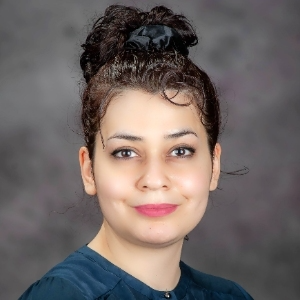Title : Application of wavelet leader based analysis to model the heart's electrical activity
Abstract:
In this study, we explore the possibility that ECG recordings belong to class of multifractal process for which a large number of scaling exponents are required to characterize their scaling structures. We use the BIDMC Congestive Heart Failure database including long term ECG recordings from 11 men, aged 22 to 71, and 4 women, aged 54 to 63 with severe congestive heart failure and the MIT-BIH Arrhythmia database that contains 48 half-hour excerpts of two-channel ambulatory ECG recordings, obtained from 47 subjects studied by the BIH Arrhythmia Laboratory between 1975 and 1979. We compare these two chronic heart diseases with the control people in the MIT-BIH Normal Sinus Rhythm database which includes 18 long-term ECG recordings of 5 men, aged 26 to 45, and 13 women, aged 20 to 50 without significant arrhythmia. The vibration analysis such as power spectral densities (PSD) analysis has been performed for differentiating the time series. Multifractal dynamics of heartbeat interval signals have been assessed by multifractal spectrum analysis to differentiate normal signals with arrhythmia and severe congestive heart failure patients. We apply Higuchi algorithm to find the fractal complexity of each cardiac rhythm and then compare the signals for different time intervals. According to our analysis, we investigate that neither the power spectral densities nor the Higuchi algorithm to find the fractal dimension alone were sufficient to separate different classes of patients and healthy people. However, when multifractal analysis and scaling exponent were used as a classifier, the three classes were well separated. In addition, multifractal analysis revealed that we have a narrow range of exponents for arrhythmia and congestive heart failure subjects and as a result, a clear loss of multifractality for them. It was of great significance to show that we have a narrower range of exponents for arrhythmia subject compared to congestive heart failure subject which is useful to recognize these two classes of patients with heart disease. Our findings provide a comprehensive framework for diagnostic and classifying different patients with cardiac disease such as arrhythmia and congestive heart failure and differentiate them with normal people without heart disease which is crucial in finding the best diagnostic and controlling strategy in fight against chronic heart disease.
Audience Take Away:
- Using rigorous analytical mathematical methods, to model different phenomena
- Combination of different fields of science in our will help to bridge the gap between different studies
- The beauty of mathematics as the mother of other sciences
- The big picture and applying our knowledge we can simplify hard problems



